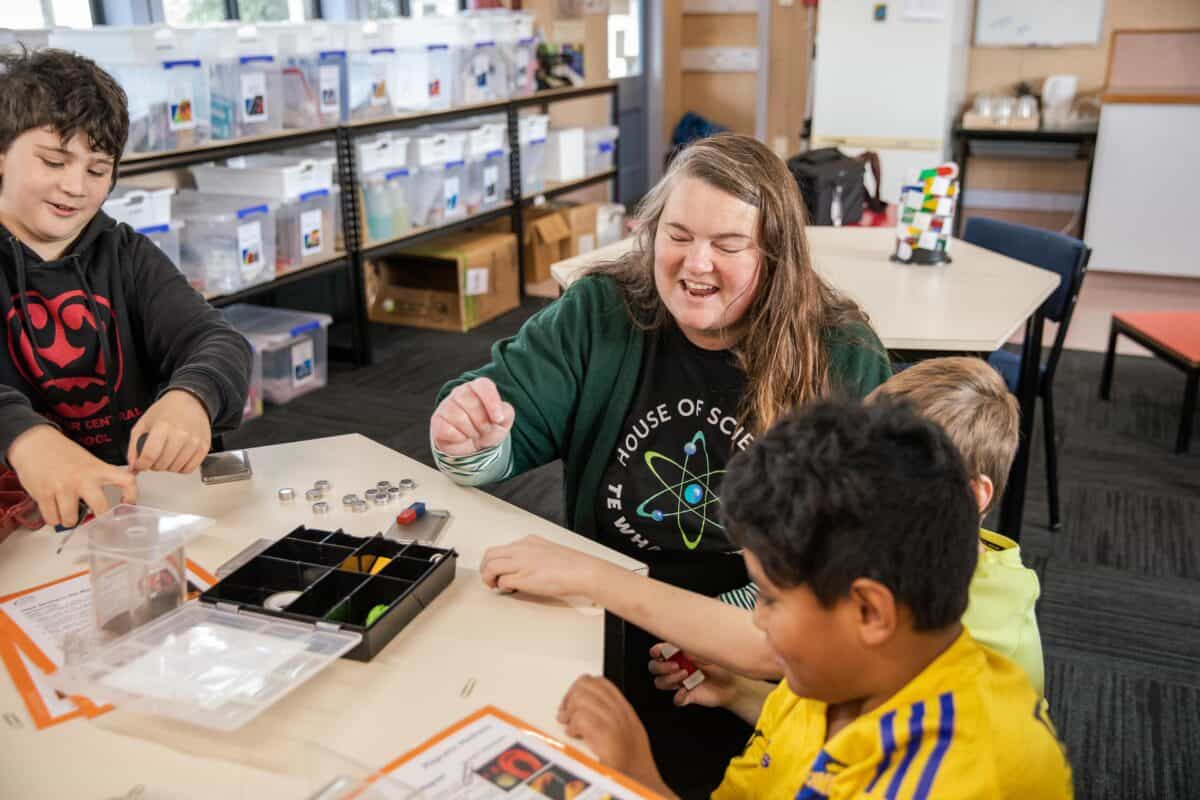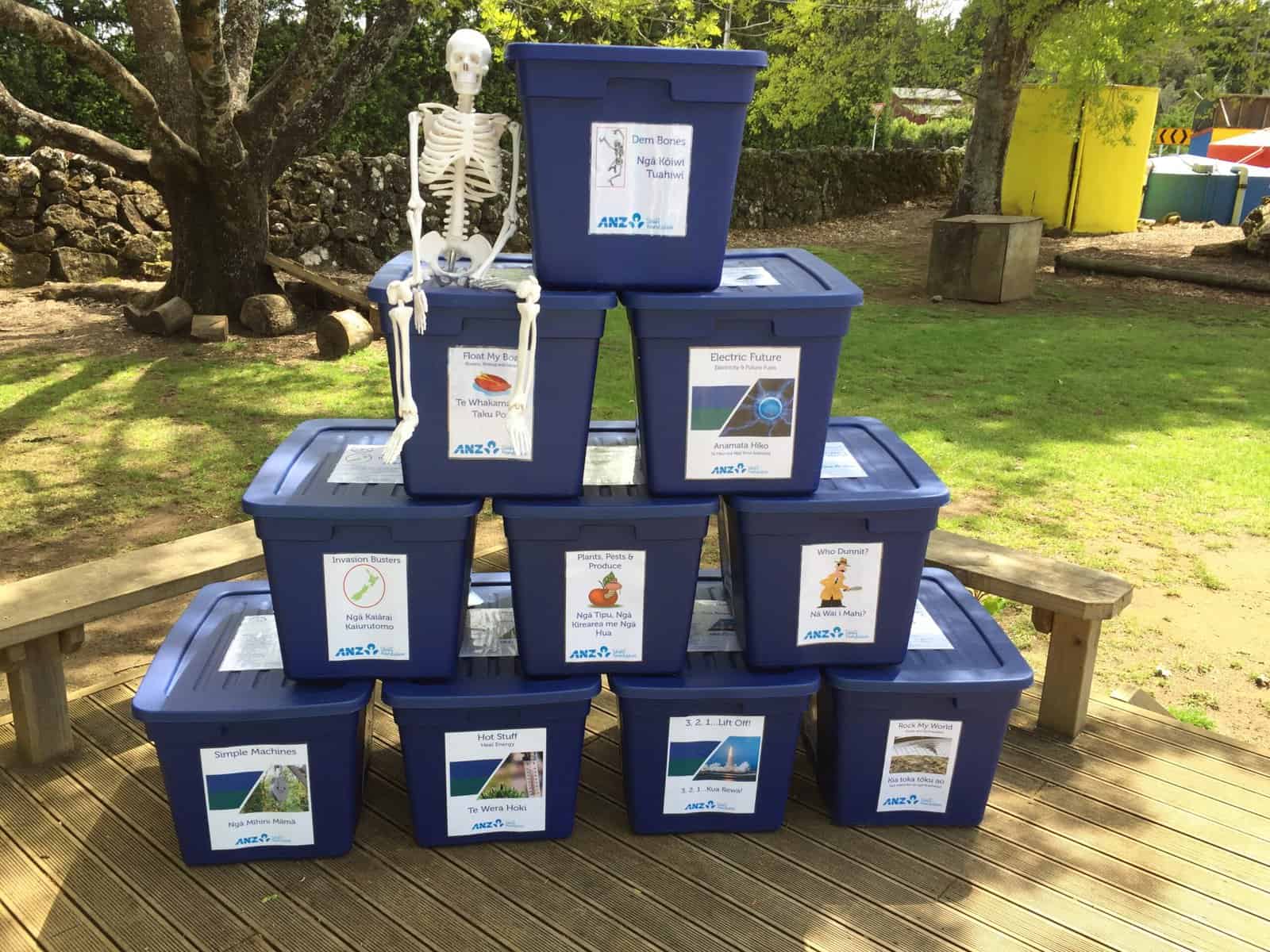Chris Duggan is a seasoned science teacher, with 15 years’ experience teaching high school science. Over the course of her career, she became concerned about the lack of science students had coming into high school.
“In 2013, a report published by the Education Review Office said that only about 27% of our primary schools were actually doing science at all,” says Chris. “I thought, this is not good enough.”
Wanting to do something about it, Chris quit her job in mid-2013 to set up a charity with a vision to empower teachers in her local area to teach science.
“I wanted to give them the confidence, skills and resources to normalise doing science on a regular basis,” says Chris.
Chris thought that what would help teachers most would be a box of ready-to-go resources that would expose students to hands-on science learning. The end product was a 79 L blue bin full to the brim with resources that cater for Year 0-8 students.
Jane Hoggard, kit developer and operations manager for House of Science, works with sponsors to design and add new resources to the library and ensures there are meaningful resources for all levels.
“Not every activity in the kit can be done by five-year-olds, but there’s at least one,” says Jane.

Everything that is needed for the teacher to deliver each of the lessons is in the kit – in addition to all the materials for all the activities, there’s a bilingual teacher manual as well as background notes and information to facilitate the teacher’s understanding of the topic and how it links to the national primary science curriculum.

House of Science has grown from a local charity serving the Western Bay of Plenty to a hub and spoke charity with 20 branches serving 700 schools across most of the North Island and Christchurch.
Currently, the House of Science kits cover 42 topics, including electricity, forces, bumblebees, magnets, climate change, and soil.
Teachers can book kits online from their local branch, and House of Science volunteers deliver them to the school—topped up, clean and tidy with everything they need. Two weeks later, the volunteers collect the kits, clean them, stock them, and prepare them for dispatch to the next school.
During the kits’ two-week stint at a school, it ends up getting shared around. This is by design and is a testament to the ease-of-use of these kits.
“A teacher can just grab the instructions and equipment for one activity and leave the box in the staff room,” says Chris. “We know from our stats that each kit is used by an average of 73 students and 3 teachers every fortnight.”
New kit for forest health
BioHeritage is sponsoring the development of a new kit for the House of Science library. The topic will be forest health and threats to forest health, like myrtle rust and kauri dieback.
Jane will be working to develop prototypes of the kit with Beccy Ganley, co-lead of BioHeritage’s Ngā Rākau Taketake programme, before trialling them in schools.
“I’ve got a few test schools who try out kit prototypes and come back to me with feedback,” says Jane. “This is important because no matter how hard you try, sometimes how you envisage something to happen in your mind is not how it plays out in the classroom.”
Once the kit has been finalised, BioHeritage has sponsored 10 copies to be distributed to branches around the country.
“We’re really excited to be working with BioHeritage on the development of this kit,” says Chris.
Jenny Leonard
